Applications and research on lasers in dentistry continue to expand, yet the Solea dental laser (Convergent Dental) is the first and currently the only laser system that can cut any tissue with a single setting. The one-setting-fits-all approach works for tooth structure, bone and soft tissue, enabling any dentist to reliably deliver anesthesia-free, blood-free, suture-free and pain-free results.
The following case shows just how safely and easily caries disease, specifically a deep-decay situation, can be removed by dentists using Solea, and the esthetically pleasing results that follow. Solea’s revolutionary software is so easy to use that any dentist can become a laser dentist while providing the patient a more pleasant experience.
Case presentation
The patient presented with recurrent subgingival buccal decay on tooth #18 and #19 (B) (Fig. 1). The clinical objective was to completely remove the caries and then restore the teeth. The total procedure was completed in approximately 10 minutes and did not require any injectable anesthetic.
Technique using Solea
For the first step of the procedure, the enamel needed to be cut to access the decay (Fig. 2). This procedure was performed using the “Hard and Soft Tissue” setting and was adjusted to 100 percent mist to effectively penetrate the enamel. For soft tissue, a reduced mist setting would be applied for appropriate coagulation.
To prepare the enamel as well as the patient, it’s recommended to outline the prep at approximately 10–20 percent power and observe the patient and the analgesic effect. Simply apply pressure to the foot pedal (Fig. 3) to increase or lessen the laser power.
embedImagecenter("Imagecenter_1_2651",2651, "large");
Once the enamel was outlined, a 1.25 mm spot size was chosen and a cutting speed of between 40–60 percent was used to smoothly and gently break through the enamel. With Solea, the learning curve is minimal; maneuvering the handpiece back and forth is all it takes for a clean and efficient cut.
Once the proper amount of enamel was removed, I then removed some soft tissue as well to better access the subgingival decay. I used a 1.00 mm spot size setting and 40-50 percent cutting speed along with 100 percent water mist. I did not need to adjust the water and usually don’t unless the area is extremely inflamed.
The dentin was now exposed, and I was ready to eliminate the deep decay (Fig. 4). For the decay removal in the dentin, the same 1.00 mm spot size was chosen with a cutting speed between 30–40 percent. The decay was then thoroughly and easily removed using the laser by applying a gentle gliding back-and-forth motion of the handpiece. Both teeth were then ready for restorative work using only the Solea and a spoon excavator.
The teeth were then restored using Ultra-Etch (Ultradent), Adhese Universal (Ivoclar Vivadent), and Filtek Supreme Ultra Universal Restorative A3B (3M). The total procedure, from start to finish, was a mere 10 minutes (Fig. 5).
Benefits of Solea
Solea has drastically changed the way I practice dentistry. This is just one of many cases that I’ve completed using this truly revolutionary laser. Using Solea has provided my practice substantial surges in production and workflow efficiency, and, moreover, patient compliance has dramatically increased.
Procedure time was reduced from typically 40 minutes compared with a mere 10 minutes with Solea to complete the case. Productivity was increased in several ways. Because the patient did not require any anesthetic, a significant amount of time was saved. If I were to use traditional instrumentation, there would have been at least one injection given and then time spent waiting for anesthetic to set in. In addition, the occlusion was accurately checked with the patient at the completion time of the procedure — potentially avoiding a follow-up appointment for a bite adjustment. Eliminating the anesthetic process also allows the ability to perform multiquadrant dentistry in the same appointment.
About the author
Dr. Robert Feudo maintains a state-of-the-art dental facility on the North Shore of Boston in Danvers, Mass. He holds a BS in biology from Suffolk University and received his DMD from the Tufts School of Dental Medicine. Feudo is a member of the American Dental Association and the Massachusetts Dental Association.
Note: This article appears in Dental Tribune U.S. Edition, Vol. 12 No. 1, January 2017 issue
ENGLEWOOD, NJ, USA: DMG America has introduced a new approach to treating incipient caries — Icon, a caries infiltrant. Until now, dental ...
PHILADELPHIA, Pa., USA: More than 240 volunteer dentists, hygienists, dental assistants and University of Pennsylvania dental students and faculty provided ...
CHICAGO, IL / NEW YORK, NY, USA: The Academy of General Dentistry (AGD) and the AGD Foundation recently teamed up with the Louisiana State University (LSU) ...
CHARLOTTE, NC, USA: The American Dental Association’s Give Kids A Smile program, Henry Schein Inc. and 3M ESPE are teaming up to put good oral health ...
PHILADELPHIA, Pa., USA: On Saturday, June 23, the Academy of General Dentistry (AGD) and the AGD Foundation will partner with the University of Pennsylvania...
NEW YORK, N.Y., USA: According to a 2011 Wall Street Journal article, many Americans avoid going to the dentist until absolutely necessary because of fear ...
LOUISVILLE, Ky., USA: Nearly 3,000 children at six Jefferson County Public Schools learned about the importance of proper dental hygiene, and many received ...
SANTA MONICA, CA, USA: Dr Nushin Shir, owner of Artistic Center for Dentistry, is celebrating the grand opening of her practice in Santa Monica, CA, USA, by...
IRVINE, Calif., USA: The Smile Generation, Futuro Academy Public Charter School, Chicanos Por La Causa and KaBOOM! recently transformed an empty site on the...
CHICAGO, IL, USA: A multi-disciplinary expert panel, convened by the American Dental Association (ADA) Council on Scientific Affairs, has issued a report ...
Live webinar
Fri. 26 April 2024
12:00 PM EST (New York)
Live webinar
Mon. 29 April 2024
12:30 PM EST (New York)
Prof. Roland Frankenberger Univ.-Prof. Dr. med. dent.
Live webinar
Tue. 30 April 2024
1:00 PM EST (New York)
Live webinar
Fri. 3 May 2024
1:00 PM EST (New York)
Live webinar
Tue. 7 May 2024
8:00 PM EST (New York)
Live webinar
Thu. 9 May 2024
8:00 PM EST (New York)
Live webinar
Mon. 13 May 2024
9:00 AM EST (New York)



 Austria / Österreich
Austria / Österreich
 Bosnia and Herzegovina / Босна и Херцеговина
Bosnia and Herzegovina / Босна и Херцеговина
 Bulgaria / България
Bulgaria / България
 Croatia / Hrvatska
Croatia / Hrvatska
 Czech Republic & Slovakia / Česká republika & Slovensko
Czech Republic & Slovakia / Česká republika & Slovensko
 France / France
France / France
 Germany / Deutschland
Germany / Deutschland
 Greece / ΕΛΛΑΔΑ
Greece / ΕΛΛΑΔΑ
 Italy / Italia
Italy / Italia
 Netherlands / Nederland
Netherlands / Nederland
 Nordic / Nordic
Nordic / Nordic
 Poland / Polska
Poland / Polska
 Portugal / Portugal
Portugal / Portugal
 Romania & Moldova / România & Moldova
Romania & Moldova / România & Moldova
 Slovenia / Slovenija
Slovenia / Slovenija
 Serbia & Montenegro / Србија и Црна Гора
Serbia & Montenegro / Србија и Црна Гора
 Spain / España
Spain / España
 Switzerland / Schweiz
Switzerland / Schweiz
 Turkey / Türkiye
Turkey / Türkiye
 UK & Ireland / UK & Ireland
UK & Ireland / UK & Ireland
 International / International
International / International
 Brazil / Brasil
Brazil / Brasil
 Canada / Canada
Canada / Canada
 Latin America / Latinoamérica
Latin America / Latinoamérica
 China / 中国
China / 中国
 India / भारत गणराज्य
India / भारत गणराज्य
 Japan / 日本
Japan / 日本
 Pakistan / Pākistān
Pakistan / Pākistān
 Vietnam / Việt Nam
Vietnam / Việt Nam
 ASEAN / ASEAN
ASEAN / ASEAN
 Israel / מְדִינַת יִשְׂרָאֵל
Israel / מְדִינַת יִשְׂרָאֵל
 Algeria, Morocco & Tunisia / الجزائر والمغرب وتونس
Algeria, Morocco & Tunisia / الجزائر والمغرب وتونس
 Middle East / Middle East
Middle East / Middle East
:sharpen(level=0):output(format=jpeg)/up/dt/2024/04/Envista-names-Paul-Keel-new-CEO-1.jpg)
:sharpen(level=0):output(format=jpeg)/up/dt/2024/02/vVARDIS_article_1920x1080px.jpg)
:sharpen(level=0):output(format=jpeg)/up/dt/2024/04/Study-links-e-cigarette-use-with-increased-risk-of-heart-failure.jpg)
:sharpen(level=0):output(format=jpeg)/up/dt/2024/04/web_FDC_small.jpg)
:sharpen(level=0):output(format=jpeg)/up/dt/2024/04/web_Bassi.jpg)
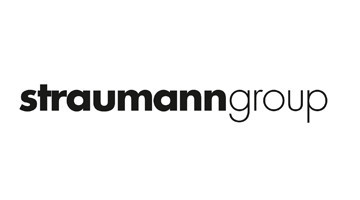
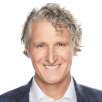

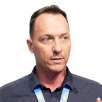



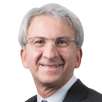
:sharpen(level=0):output(format=png)/up/dt/2022/01/HASSBIO_Logo_horizontal.png)
:sharpen(level=0):output(format=png)/up/dt/2024/01/UnionTech-Logo-Hub.png)
:sharpen(level=0):output(format=png)/up/dt/2013/01/Amann-Girrbach_Logo_SZ_RGB_neg.png)
:sharpen(level=0):output(format=png)/up/dt/2023/08/Neoss_Logo_new.png)
:sharpen(level=0):output(format=png)/up/dt/2015/09/Curaden.png)
:sharpen(level=0):output(format=jpeg)/up/dt/e-papers/330729/1.jpg)
:sharpen(level=0):output(format=jpeg)/up/dt/e-papers/330727/1.jpg)
:sharpen(level=0):output(format=jpeg)/up/dt/e-papers/330725/1.jpg)
:sharpen(level=0):output(format=jpeg)/up/dt/e-papers/325039/1.jpg)
:sharpen(level=0):output(format=jpeg)/up/dt/e-papers/325007/1.jpg)
:sharpen(level=0):output(format=jpeg)/up/dt/e-papers/313543/1.jpg)
:sharpen(level=0):output(format=jpeg)/up/dt/2017/03/8fc776bf44debd4b2301aa8f7a1eaf76.jpg)
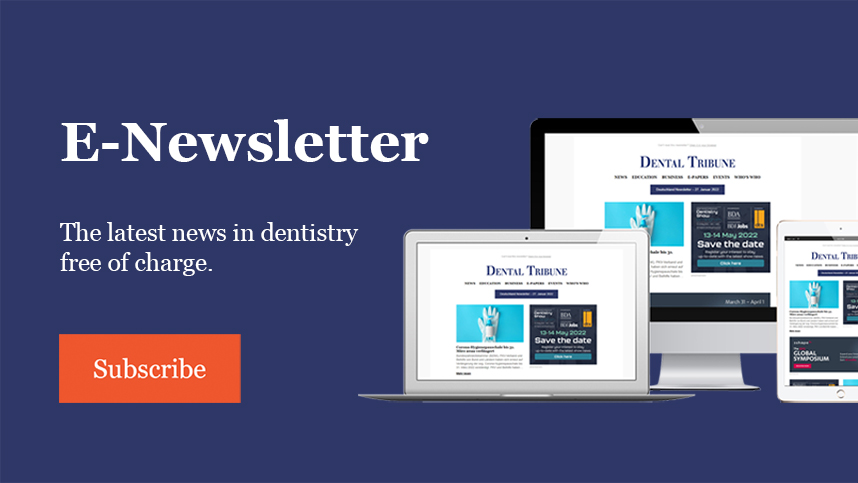
:sharpen(level=0):output(format=jpeg)/up/dt/2024/04/Envista-names-Paul-Keel-new-CEO-1.jpg)
:sharpen(level=0):output(format=gif)/wp-content/themes/dt/images/no-user.gif)
:sharpen(level=0):output(format=jpeg)/up/dt/2009/07/b3a500ebd957fb64f4283e9affd4a274.jpg)
:sharpen(level=0):output(format=jpeg)/up/dt/2012/07/a87bdc4a193325734ace17ede0114517.jpg)
:sharpen(level=0):output(format=jpeg)/up/dt/2010/08/bb6a787fedcf1d09c4df98c3f75ec14b.jpg)
:sharpen(level=0):output(format=jpeg)/up/dt/2011/10/9deb433b157c74384da0e3346113bb3a.jpg)
:sharpen(level=0):output(format=jpeg)/up/dt/2017/01/79177dff4ad83024047bcebdc504c406.jpg)
:sharpen(level=0):output(format=jpeg)/up/dt/2017/01/8a3bf68a8cfca2823b6cd611a8950b04.jpg)
:sharpen(level=0):output(format=jpeg)/up/dt/2017/03/e7b76366cdae0b55d913d7c137a4ba9a.jpg)
:sharpen(level=0):output(format=jpeg)/up/dt/2010/03/41b87b10a5e0b85a08a25afdfdbb83cd.jpg)
:sharpen(level=0):output(format=jpeg)/up/dt/2018/10/Volunteers_build_a_playground.jpg)
:sharpen(level=0):output(format=jpeg)/up/dt/2011/09/7dee9f5cc304c1da885d349e82b9fc2e.jpg)
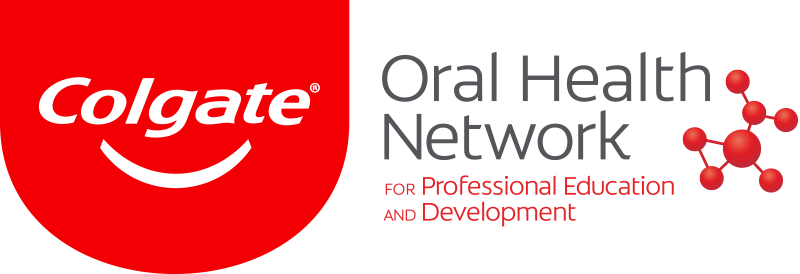
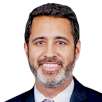



:sharpen(level=0):output(format=jpeg)/up/dt/2024/04/Envista-names-Paul-Keel-new-CEO-1.jpg)
:sharpen(level=0):output(format=jpeg)/up/dt/2024/02/vVARDIS_article_1920x1080px.jpg)
:sharpen(level=0):output(format=jpeg)/up/dt/2024/04/Study-links-e-cigarette-use-with-increased-risk-of-heart-failure.jpg)
:sharpen(level=0):output(format=jpeg)/up/dt/e-papers/330727/1.jpg)
:sharpen(level=0):output(format=jpeg)/up/dt/e-papers/330725/1.jpg)
:sharpen(level=0):output(format=jpeg)/up/dt/e-papers/325039/1.jpg)
:sharpen(level=0):output(format=jpeg)/up/dt/e-papers/325007/1.jpg)
:sharpen(level=0):output(format=jpeg)/up/dt/e-papers/313543/1.jpg)
:sharpen(level=0):output(format=jpeg)/up/dt/e-papers/330729/1.jpg)
:sharpen(level=0):output(format=jpeg)/up/dt/e-papers/330729/2.jpg)
:sharpen(level=0):output(format=jpeg)/wp-content/themes/dt/images/3dprinting-banner.jpg)
:sharpen(level=0):output(format=jpeg)/wp-content/themes/dt/images/aligners-banner.jpg)
:sharpen(level=0):output(format=jpeg)/wp-content/themes/dt/images/covid-banner.jpg)
:sharpen(level=0):output(format=jpeg)/wp-content/themes/dt/images/roots-banner-2024.jpg)
To post a reply please login or register